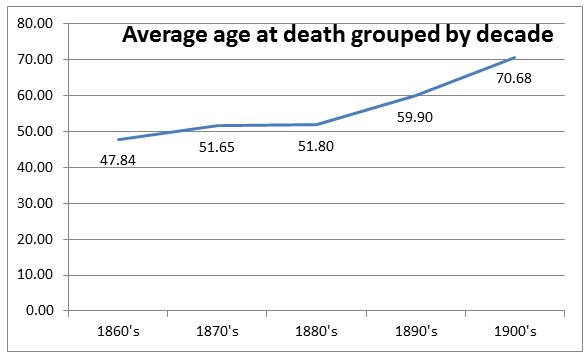The Life of the Irish-American Laborer in Cincinnati
By: Ben Knollman
A laborer is defined as a worker that performs unskilled manual labor. This type of work can take on many forms, including laying concrete, building fences, digging large canals or tunnels, and sweeping streets. These occupations are very common in larger cities and can be performed by anybody in good physical shape, regardless of prior skills or knowledge. While many Irish immigrants who came to Ohio in the mid- to late-nineteenth century were from the rural west of Ireland and perhaps hoped to become farmers, they were often forced to take whatever work they could find, such as manual labor. Common positions for Irish laborers included digging the Ohio and Erie Canal and the Miami and Erie Canal. Once railroads became more established in America, the Irish also found work laying down track. Manual labor, with its hard work and low wages, continued to be a very common position for Irish-Americans as this was often seen as less desirable work for earlier-established citizens who had moved to the middle class.
A simple search of the database for Irish laborers in Cincinnati provided well over 2,000 results, as a testament to the large number of unskilled Irish workers living in Cincinnati in the late nineteenth and early twentieth century. This was narrowed down to a survey quantity of 100 men with dates of death from 1865 to 1908. From this data, certain trends, commonalities, and other statistics were analyzed to try to understand a larger picture of what life was like for these men.
Grouping the entries by decade and analyzing the average age at death by each decade gave a positive result in the increasing quality of life. As shown in Figure 1, the average age of the entries steadily increased each decade, with a pretty drastic increase in the 1890’s. Looking at life expectancy tables published by the National Center for Biotechnology Information shows that the average white male living in this time period in America would live to be around 40. This seems to show that laborers living and working in Cincinnati were living longer than average. Part of this may be attributed to the fact that people living in Ireland during this time had a slightly longer average life expectancy, at around 50.

Figure 1 – Chart showing the increase of average lifespan grouped by decades, 1860’s – 1900’s
Forty-one of the 100 entries do not have a home address listed, but rather have either the City Hospital or City Infirmary listed as their final location. Looking through the annual reports of both of these locations for the year 1911 gave a very good representation of what life may have been like for the people who spent time there. At the City Hospital in 1911, 18.1% of the people that were discharged or died were laborers. The City Infirmary had a significant Irish-American population in 1911, with 19.6% of the population having Irish roots. While it seems like many Irish-American laborers were being treated in these facilities, it should be mentioned that the nineteenth century brought great advances in medicine. The introduction of new vaccines, drugs, and medicinal treatments replaced outdated methods.
It is certainly interesting to understand the lives these Irish-Americans lived as they relocated to Cincinnati and took these difficult jobs. Even though the jobs were seen less desirable by other people, these men took them and made their American Dream possible.
Bibliography
“Annual Reports of the City Departments of the City of Cincinnati …” Google Books. Web. 27 Mar. 2017. https://books.google.com/books?id=2mQ9AQAAMAAJ&pg=PA331&lpg=PA331&dq=cincinnati+city+infirmary+Dr.+John+Adams&source=bl&ots=CGhjStI1wA&sig=MCBg8agAolk-bd6DLtgZxJAK3jU&hl=en&sa=X&ved=0ahUKEwiOoKGe2ojTAhUm4IMKHTs9A5cQ6AEIGjAA#v=onepage&q=cincinnati%20city%20infirmary%20Dr.%20John%20Adams&f=false.
FitzGerald, John. “A Hundred and Fifty Years of Vital Statistics: Documenting Demographic Change in Ireland.” (2016): 14-16. Web. 04 Apr. 2017. http://www.ssisi.ie/Irish_Demographic_Change_Since_the%20Famine_160516.pdf.
Hacker, J. David. “Decennial Life Tables for the White Population of the United States, 1790–1900.” Historical Methods. U.S. National Library of Medicine, Apr. 2010. Web. 5 Apr. 2017. https://www.ncbi.nlm.nih.gov/pmc/articles/PMC2885717/.
“Irish Ohioans.” Irish Ohioans – Ohio History Central. Web. 27 Mar. 2017. http://www.ohiohistorycentral.org/w/Irish_Ohioans.
“Laborer.” Wikipedia. Wikimedia Foundation, Web. 27 Mar. 2017. https://en.wikipedia.org/wiki/Laborer.
“The Pharmaceutical Century – 1800 to 1919.” The Pharmaceutical Century – 1800 to 1919. ACS Publications, n.d. Web. 4 Apr. 2017. http://www3.uah.es/farmamol/The%20Pharmaceutical%20Century/Ch1.html.